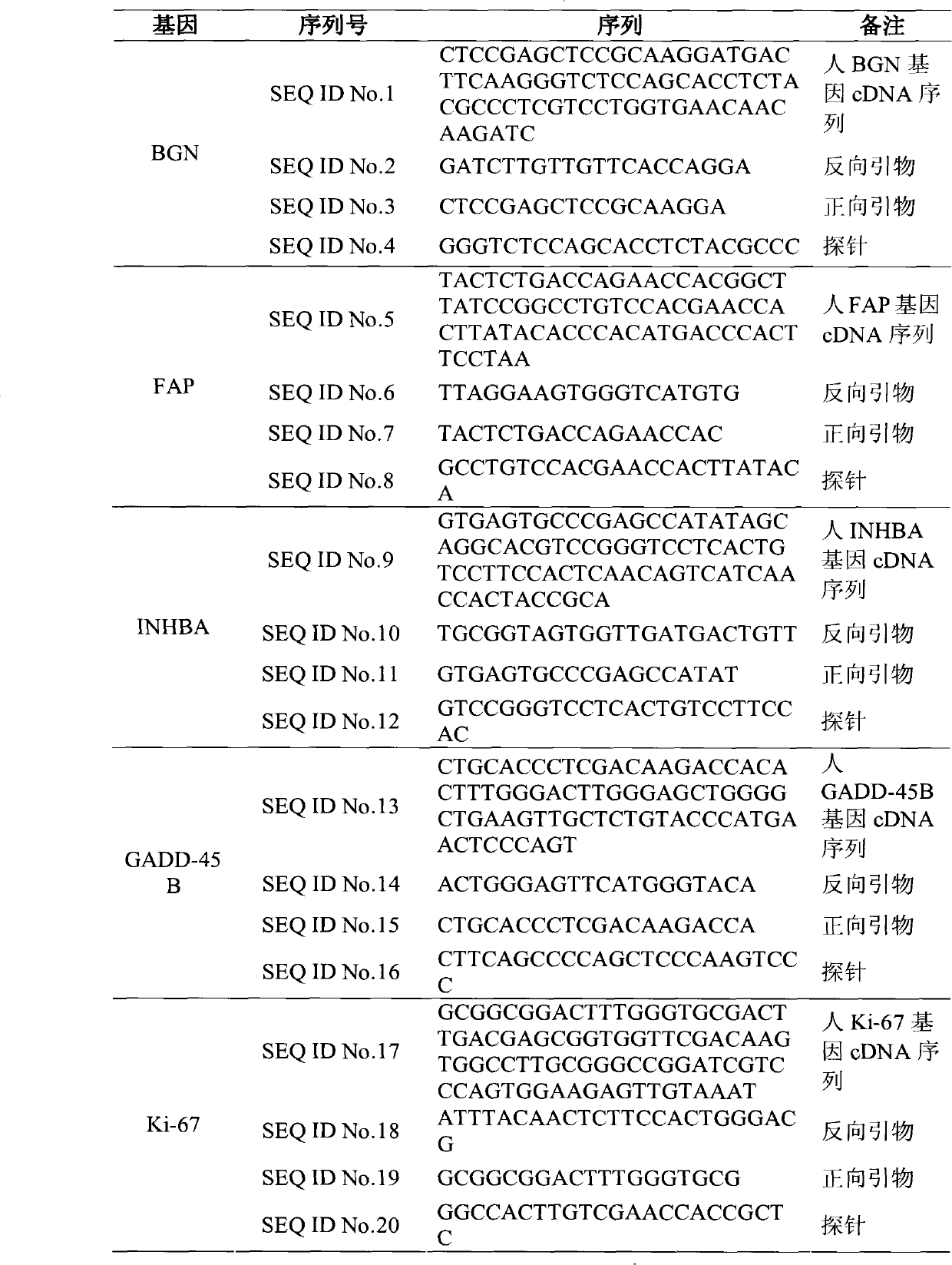Kit for quantitative evaluation for long-term recurrent risk of colorectal cancer
A technology for colorectal cancer and long-term recurrence, applied in material excitation analysis, fluorescence/phosphorescence, etc., can solve problems such as failure to predict curative effect
- Summary
- Abstract
- Description
- Claims
- Application Information
AI Technical Summary
Problems solved by technology
Method used
Image
Examples
Embodiment 1
[0242] Example 1. Selection of clinical specimens and RNA extraction
[0243] 1. Take a paraffin sample from the primary position and screen the qualified tissue samples after HE staining of the tissue section, and exclude samples with less than 5% of tumor cells.
[0244] 2. Take 6 pieces of paraffin tissue pieces cut into 10 microns thick, and extract total RNA from them using RNeasy Mini Kit (Qiagen, Item No. 74106).
[0245] 3. Treat total RNA with DNase I to remove DNA impurities.
[0246] 4. Use PCR assay for β-actin DNA (ABI, catalog number: 401846) detects DNA residues. Quantify total RNA.
Embodiment 2
[0247] Example 2. Reverse transcription amplification technology (RT-PCR) to prepare cDNA
[0248] Prepare cDNA by reverse transcription amplification: prepare the mixed solution for reverse transcription amplification: total RNA template 50ng, 18 reverse primer working solutions each take 0.4μl (final concentration is 200nM), 10×RT-PCR buffer 2μl, 4 μl of dNTP mixture, 1 μl of RNase inhibitor, 1 μl of reverse transcriptase, RNA extracted in Example 1, and the remaining volume made up with water. Mix the upper amplification system uniformly and incubate at 37°C for 60 minutes to obtain cDNA.
Embodiment 3
[0249] Example 3 Taqman real-time PCR (Taqman real-time PCR)
[0250] Real-time fluorescence quantitative PCR amplification was performed on the above-mentioned amplified products. 18 genes were separately performed. Each PCR reaction used a pair of specific primers and a specific Taqman fluorescent probe for detecting the amplified products of the primers.
[0251] 1. Each PCR reaction system is prepared as follows: two specific primers for forward and reverse are 200nM, 10×PCR buffer 2μl, dNTP mixture 1.6μl (200nM), DNA polymerase 0.1μl, Taqman fluorescent probe 100nM , 0.8μl of the reverse transcription product in Example 2 (equivalent to the reverse transcription product of 2ng RNA template), and the remaining volume is made up of water.
[0252] 2. The amplification reaction is carried out at 95°C for 15 minutes, 95°C for 10-15 seconds, 60°C for 10-15 seconds, 72°C for 10-15 seconds, for 30 cycles, 72°C for 7 minutes. After the amplification reaction, record the Ct value of eac...
PUM
 Login to View More
Login to View More Abstract
Description
Claims
Application Information
 Login to View More
Login to View More - R&D
- Intellectual Property
- Life Sciences
- Materials
- Tech Scout
- Unparalleled Data Quality
- Higher Quality Content
- 60% Fewer Hallucinations
Browse by: Latest US Patents, China's latest patents, Technical Efficacy Thesaurus, Application Domain, Technology Topic, Popular Technical Reports.
© 2025 PatSnap. All rights reserved.Legal|Privacy policy|Modern Slavery Act Transparency Statement|Sitemap|About US| Contact US: help@patsnap.com



